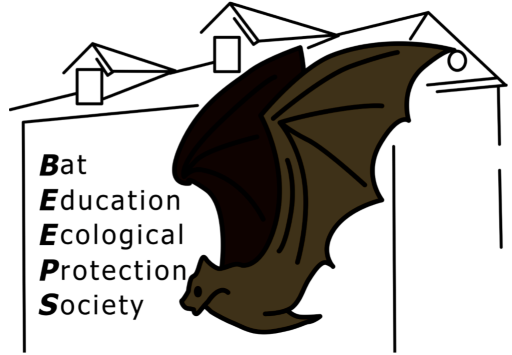
Peachland Bats
Peachland bats, previously considered a nuisance, have now become a local phenomenon. For decades, it has been well known that the nocturnal mammals have inhabited the 1908 Peachland Primary School. Only recently have their numbers have been revealed and celebrated.
Peachland Primary served as a school until 2002 when it was boarded up, and all students were moved to the bigger Peachland Elementary. The building sat empty for nearly a decade and fell into a state of near-disrepair. However, with the confirmation of the bat colony in the school’s attic, the building and the bats were saved. The Primary School then underwent a complete restoration, and now serves as the Peachland Visitor Centre and Art Gallery.
Wildlife biologist, Aaron Reid from the Ministry of Environment, estimated the colony to be upwards of 2000 bats. Reid identified Peachland’s roost as a maternity colony, which means it is comprised mostly of females and their pups.
Do not fear the sharp teeth visible in close-ups photos of our bug-eating bats. It allows them to trap and consume their tough-skinned prey in flight. In fact, those teeth are sharp enough to pierce even insect exoskeletons. Each bat can eat over half its body weight in insects in one night, explaining why Peachland is virtually mosquito-free!
Little Brown Myotis – Myotis lucifugus

The little brown bat is found all across Canada where it has the largest distribution of all bats in this country, with colonies in all provinces and territories except for Nunavut. Weighing only 7 to 14 grams, they have a wingspan of 22 to 27 centimeters. Contrary to the myth that bats are blind, Little brown bats have excellent vision. Although their hearing and echolocation are vital during their hunting forays, they use visual clues during migration, and to locate their roosts, and hibernation sites.
Maternity colonies often roost in buildings, (like the Peachland Historic School) but they also use tree cavities or other places that stay dark and warm during the day, like bat boxes. Little Brown Bats will mate in the fall and can mate several times with different partners. Females will store the males’ sperm throughout the winter until they ovulate in the spring. Gestation is dependant upon the health of the female.
The gestation period lasts around 50 to 60 days, and at the end, a single pup is born in June or July. Little Brown Bat pups can fly at just about four weeks old!
Conservation status: While 50 percent of the little brown bat’s global range is in Canada, this species is endangered in Canada. This is mainly due to white-nose syndrome, a fungus that thrives in cool, moist environments and infects the exposed skin of the muzzle and wings of hibernating bats. It causes bats to use more energy than they can afford during hibernation and to wake up more frequently than healthy bats, often leading to death, through starvation and/or dehydration.
Yuma Myotis – Myotis yumanensis

Yuma Myotis is a common bat species found in British Columbia. Its length is eight to 10 cm and has a wingspan of 22 to 26 cm. It varies in colour from dark brown to tan-grey.
They tend to enjoy roosting in caves, buildings, mines, and bat houses. The females roost together from April to late August or October, depending on the location. We don’t know exactly how long the gestation period is, but sometime in May or June, the females give birth to one pup. Yuma bats tend to hibernate in buildings, dead trees, and mines.
A study in western Oregon showed that the feeding activity of Yuma Myotis was up to eight times higher along forested edges of streams compared to those in logged areas, apparently because the wooded areas contain greater insect diversity. Although Yuma Myotis feed predominantly over water, they eat a variety of insects that includes moths, froghoppers, leafhoppers, June beetles, ground beetles, midges, mosquitoes, muscid flies, caddisflies, and crane flies. Yuma Myotis are threatened by the loss of riparian habitats and the decline in permanent water sources, a bi-product of climate change.

Pup feeding from mom. Photo credit David Nagorsen 
Pup learning to hunt

